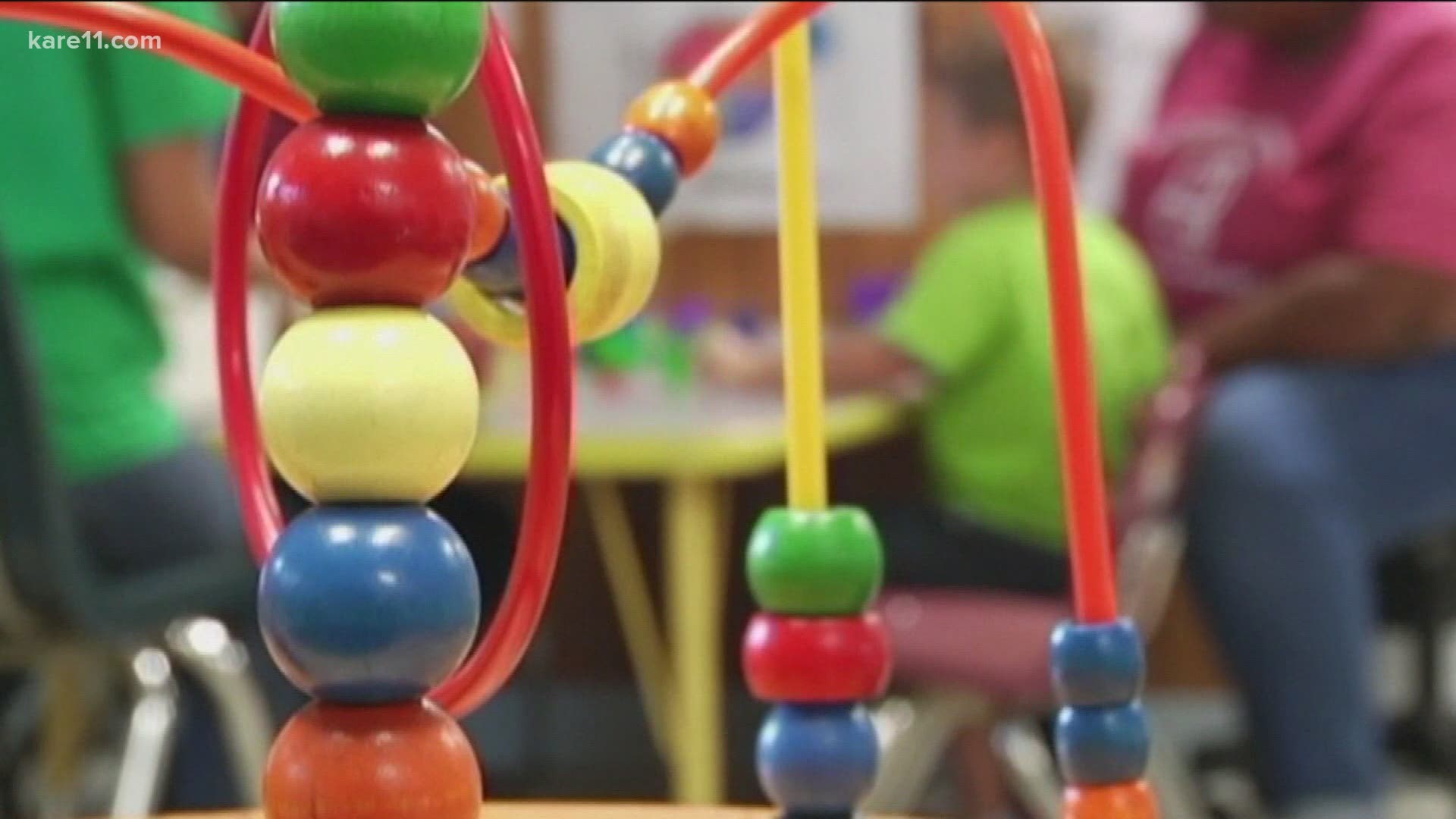MINNESOTA, USA — The pandemic has crushed child care facilities since the very beginning.
But with omicron, they’re entering a new and perhaps even more challenging phase. Kids are quarantining left and right after coming into close contact with COVID-19, leaving some facilities almost entirely empty as parents scramble to find work accommodations.
Clare Sanford, the government relations chair on the board of the Minnesota Child Care Association and a vice president at New Horizon Academy, said at one point in the last week, New Horizon had more than 1,400 kids home on quarantine across dozens of locations.
“We had a building in Burnsville licensed for 100 children, and only three could legally attend because of quarantine rules. One center in Minneapolis for 200 kids only had 20 children there. This is an immense strain on families and providers,” Sanford said. “Parents’ mental health and financial health has just reached a breaking point.”
That led the state’s Department of Human Services to develop a new policy this week.
“Effective immediately, child care license holders are no longer required to quarantine children and staff who are close contacts with a positive COVID-19 case as part of licensing requirements,” the agency told providers in a directive this week. “While no longer a licensing requirement, DHS does strongly encourage providers to follow MDH and CDC guidance for quarantining.”
In short, this means that while the state recommends child care providers still follow public health guidance, they now have more flexibility to determine which kids should stay home and for how long after an exposure.
“It felt like an extra added burden,” DHS Commissioner Jodi Harpstead said of the previous quarantine rules in an interview with KARE 11. “The child care providers are going to have to make their very best judgments. I would suggest parents talk to their providers, about what their preferences would be.”
Harpstead points out that, as a licensing requirement, child care providers still need to report cases and notify parents of them – and obviously must isolate kids and staff who test positive for COVID.
“Kids that actually have COVID should stay home, but the quarantine was getting to be very difficult,” Harpstead said. “It led to some very long quarantines, parents missing work, and real hardship. Our expectation now is that providers will review their policies and procedures and align their efforts to follow COVID guidance to the greatest extent possible, but not so much on quarantine.”
At New Horizon Academy, Sanford said locations will follow CDC guidance for the unvaccinated, meaning kids under five years old who have an exposure will quarantine for just five days and can come back with a negative COVID test.
They’re also shortening the isolation period for kids who had another household member test positive, which sometimes led to weeks of quarantine.
“We are making a few small changes right away,” Sanford said. “They’re not nearly as far as some parents would like us to go right now, but we feel they’re prudent, to say – we want to offer some relief right away.”
In her role with the Minnesota Child Care Association, Sanford said it appears that providers across the state are weighing their options carefully when it comes to quarantine procedures. Many will continue to follow state and federal guidance, although they’re awaiting specific recommendations from the CDC on child care facilities.
“This isn’t a free-for-all. It’s not like the state made this announcement and all providers went, ‘no quarantine at all, we’re done!’ That’s not what has happened,” Sanford said. “This is a huge responsibility. This goes to the very core of what we do as providers.”
In St. Michael, longtime family child care provider Hollee Saville said she plans to take each quarantine decision on a case-by-case basis.
She said she supports the state’s new guidance because of the flexibility it offers.
“I can determine, ‘yes, this kid was exposed, but maybe for not very long,'” Saville said. “I’ll use my best judgment and information at hand that’s still going to ensure the safety and health of all the families in my care.”
Watch more on the coronavirus:
Watch the latest reports and updates on the coronavirus pandemic in Minnesota with our YouTube playlist:

